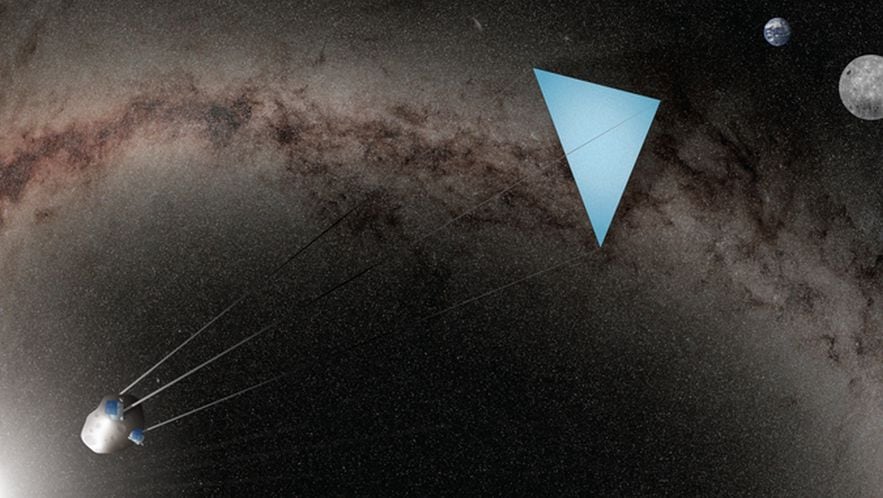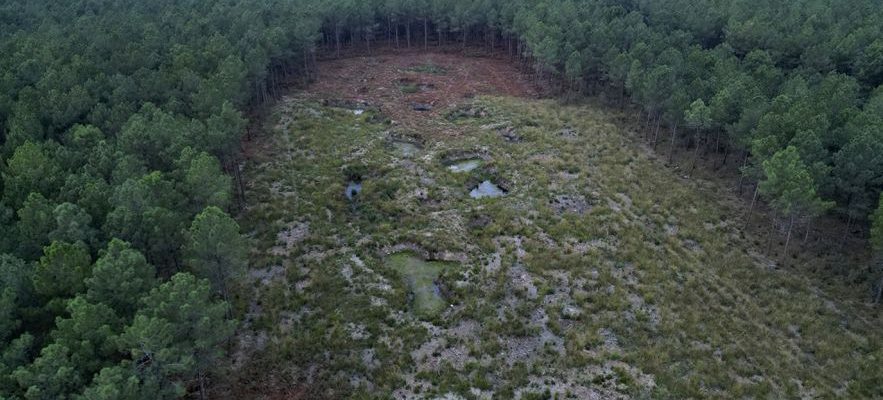Reforest, everywhere, all the time
It would be enough to plant. An unfortunate Paris – Nice by plane? Count 4 trees, and that’s it. For a new pair of jeans, produced in Bangladesh, only one. Thanks to reforestation, no more climate worries! The idea is attractive: trees absorb CO2. What’s better than growing it, every time we emit it?
There is therefore only one step to take for private sector manufacturers who dare to make the most excessive promises in order to be able to continue their activities at the same pace. According to the analysis firm Trove Research, they would be ready to plant at least 380 million hectares by 2050. Which already amounts to eating away at agricultural land or reserved for biodiversity.
As a result, alerts are multiplying: “The plantation objectives are unrealistic,” warns Paul Leadley, ecologist at IPBES, the “IPCC of biodiversity”. “A majority of projects are monocultures, which fuel fires, pest attacks and biological deserts, depriving other species of resources.”
Planting remains useful, but only to compensate, after a drastic reduction in emissions, the experts agree: “The priority is to protect the forests. And if we plant, we must recreate the ecosystems, with a multitude of different species, but it’s tedious,” continues Paul Leadley.
“Mosaic” forests, as the National Forestry Office calls them. The institution is trying to find mixtures adapted to tomorrow’s climate, to meet the French objectives of 1 billion trees in 2032. A sign of awareness of the limits of reforestation: the European Union will ban “neutral” claims for the climate”, if these are based only on planting.
The ONF is experimenting with “mosaic” forests, like here near Poitiers.
© / GUILLAUME SOUVANT / AFP
Growing biofuels
All-in-one, in theory. To reduce emissions, more and more countries are investing in bioenergy. The idea: to grow trees, rapeseed, or camelina, as farmers in the north of France are currently experimenting with, to absorb CO2, before transforming them into fuel.
Win-win, provided you capture the fumes. Europe even considers it to be “renewable energy”. But according to projections published in Nature in December 2022, the Union’s objectives require reserving 20% of cultivated land.
To achieve these objectives, Europe will therefore have to deforest or import more raw materials. “Massive bioenergy means putting hypotheses within hypotheses,” says Pierre-Marie Aubert, researcher in agricultural policies at the Institute of Sustainable Development and International Relations.
The researcher lists: “We would have to cultivate without harming the soil, then harvest and transport without emitting, capture everything during combustion, which we do not know how to do, and finally succeed in crystallizing the carbon in a stable form to ensure that it is not released into the air.”
As with reforestation, with which this technical solution also competes for available space, scientists believe that the production of bioenergy must be reserved for what it is impossible to decarbonize, such as inevitable travel and heavy industries. Ecology rhymes with parsimony.
In nature, when it rains or snows, chemical reactions with rocks trap part of the CO2. Scientific organizations want to spread it to accelerate this phenomenon. An article published in Nature already proposed this solution in 1990. It is being explored again, while geoengineering is regaining ground.
In this game, Project Vesta is in the lead. This American non-profit structure believes it has the holy grail with its olivine powder. Advantage: it is theoretically capable of capturing its weight in CO2, which places it among the most promising solutions. Disadvantage: it would be dumped on the beaches which would turn green, the color of this silicate. Not very appetizing.
The American Department of Energy is considering spreading it in fields. Rocks like basalt could both serve as a fertilizer and a CO2 trap. But these projects remain risky: “We cannot control the impacts” on large areas, recognized Pete A. Raymond, professor at Yale and project leader, in a statement published mid-October. Every climate remedy has its side effects. These rocks could destroy ecosystems, favoring certain algae and plankton over others. Worse: according to a study published in Nature on October 4, olivine can also release CO2. Green, but potentially counterproductive.
Modify solar radiation (MRS)
A flagship measure of geoengineering, it aims to reproduce what happens during a giant volcanic eruption: an immense cloud of dust is projected into the stratosphere, forming a screen between the Sun and the Earth, causing a fall in the temperatures. Such a scenario was measured for the first time in 1991 with the awakening of Pinatubo (Philippines) which resulted in an aerosol input estimated at 17 million tonnes of sulfur dioxide (SO2) causing a drop in temperature of 0 .4°C on a global scale. In 2006, Paul Crutzen, Nobel Prize winner in chemistry and father of the term “Anthropocene”, put forward the idea of massively releasing SO2 to counteract global warming. “This gave a boost to research in this area which is essentially based on numerical models,” explains Olivier Boucher, climatologist at the Pierre-Simon-Laplace Institute (IPSL). With an order of magnitude: by injecting 10 million tonnes of SO2 per year into the stratosphere, man can hope to cool the climate by 1°C. Since then, many personalities have claimed to support this research, including Bill Gates.
“Be careful of the consequences,” warns Olivier Boucher. “In the long term, if nothing is done to reduce atmospheric concentrations of greenhouse gases, we risk a terminal shock.” The day the system stops, while quantities of CO2 have continued to accumulate in the atmosphere, we would witness a sudden warming of temperatures. “In a decade, we would recover 70 to 80% of what we cooled,” estimates the Frenchman. Other specialists assure that if we used MRS technologies for forty years and stopped them overnight, the temperature would increase ten times faster than the current rate of global warming. With cascading consequences: greater droughts (particularly in Africa) and disrupted monsoons (in Asia).
Acting on ocean chemistry
In three ways: by fertilizing them, by acidifying them and by modifying their albedo. In the first case, it involves sowing ferrous particles in the water in order to stimulate the development of phytoplankton, considered a biological carbon pump. “Fertilization was a very advanced field of research in the United States fifteen or twenty years ago,” explains Stéphane Blain, from the microbial oceanography laboratory in Banyuls-sur-Mer. But scientifically, the effectiveness of this phenomenon has never been been verified.” Until today, a dozen experiments have been carried out on a small scale, like that of businessman Russ George, who dumped 100 tons of iron sulfates into the Pacific off the coast of Canada. “We are trying to turn the knob of Oceanian natural mechanisms in one direction but no measurements have been made in situ and we do not know the quantities of carbon trapped,” tackles the French researcher. Locally, specialists fear that this fertilization will tire marine organisms (fauna and flora). And overall, they fear effects in all oceans.
Another approach to changing the chemistry of the oceans is the alkalization of its surface consisting of pouring natural substances (lime ores, olivine) to reverse the acidification process and increase CO2 absorption capacities. “This amounts to accelerating an existing physiological process, but here again we do not know the impacts,” says Stéphane Blain. Finally, the last way to act on the ocean is to modify its albedo, that is to say its capacity to reflect the Sun’s rays back into space. Improving its mirror effect could therefore significantly cool the climate. To do this, some apprentice sorcerers imagine creating a white foam or pouring microbeads (in plastic!). “There, we are at the level of conjecture, tackles the oceanographer severely. As long as it remains purely theoretical.”
Putting a space shield into orbit
The idea is almost as old as the beginnings of the conquest of space but it remains, fortunately, in the state of science fiction. The simplistic principle? Deploy a huge shield in Earth’s orbit that would completely obscure or filter the Sun’s rays and thus reduce the effects of global warming. It has been emitted in various forms – a solar sail, gigantic mirrors or even a swarm of satellites to deflect UV. It comes up repeatedly in the news throughout the projects. One of the latest is the work of István Szapudi, a scientist at the Institute of Astronomy at the University of Hawaii, published in the highly respected journal Proceedings of the National Academy of Sciences (PNAS) in August 2023. It aims to set up a sort of “parasol” located at the Lagrange point L1 (where gravitational forces balance) which would be, via graphene ropes, attached to an asteroid in stable orbit. Objective: reduce solar radiation by 1.7%.

Artistic rendering of a solar shield deployed in space and connected to an asteroid.
© / István Szapudi/UH Institute for Astronomy
In France, the self-proclaimed “World Organization for Environmental Protection” has evoked the same type of “black umbrella” system in order to generate a giant solar eclipse using a satellite in geostationary orbit. On their website, relatively few details on the feasibility of such a project, except that said shield would have several types of filters, on several axes of inclination and rotation in order to vary the shadow area cast on the ground. Last detail: a budget of 25 million euros to launch feasibility studies.
Finally, note the more original program of scientists from the University of Utah (United States) to exploit the Moon to create a dust screen projected 1 million kilometers from the Earth, again at the level of the famous Lagrange point L1. A rather crazy new idea for exploiting our small natural satellite. Not sure that this accelerates the return of man to its surface.
.
